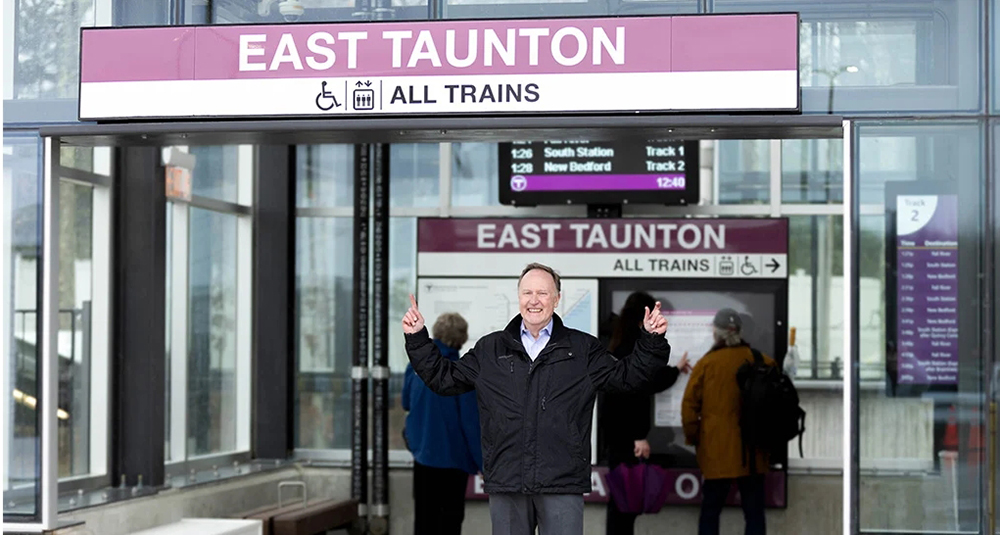New Hampshire industrial and office markets are moving in different directions in 2022 - by Kristie Russell

The New Hampshire market finished the year with a strong quarter, seeing multiple transactions in the industrial and office sectors. That said, the two categories are moving in different directions. The industrial market continued to tighten as its vacancy rate fell by 1.6% year-over-year (YOY), ending the quarter at 2.9%. With this tight vacancy rate, rents increased by $1.97 per s/f YOY. Conversely, the office market finished the year with an 11.2% vacancy rate, rising by 1.6% YOY. Over the past year, rents oddly climbed with the vacancy rate. It was not until Q4 that the overall vacancy rate and rents started to level out, with rents unchanged year-over-year.
Focusing on the industrial market, the sector with the biggest change was warehouse/distribution (W/D). The vacancy rate fell by 2.8% YOY, ending Q4 at 1.6%. This change was not only due to tenant expansion in the submarket this year - like Alene Candles in Amherst, Baron’s Major Brands in Bedford, and XPO Logistics in Manchester - but also due to new tenants entering the market, like Novo Building Products and Masy BioServices in Amherst.
With less than 500,000 s/f of vacant W/D space in the market, it is not surprising that rents climbed by $2.07 per s/f, ending Q4 at $9.27 NNN. With the limited availabilities in the Salem submarket, and close to no available space in the town of Salem, some owners in the surrounding areas have increased their rents year-over-year. Similarly in the Manchester submarket, the demand for space has not slowed down, with a near 0% vacancy rate in the W/D category. This market position will likely drive up lease rates and sale prices even higher as space becomes available in the Manchester submarket.
2021 was also busy on the W/D sales front and at higher than average sale prices. The fourth quarter had the highest sale price per s/f of any quarter in 2021, with a weighted average sale price of $104 per s/f. This included investor sales, like 11 Ricker Ave. in Londonderry that sold to a Calif.-based investment group for $159 per s/f, and an owner-occupier sale to Brueckner Group USA that purchased 50 Education Way in Dover for $153 per s/f.
As the industrial market as a whole continues to tighten, rents are expected to climb in 2022 if inventory shortfalls persist. One outcome from such tight vacancy rates is the potential of increased construction.
Moving to the office market, it comes as no surprise the sector suffered a bit in 2021 - some large national tenants left the market, while other tenants reduced their footprints. However, the market looks to be leveling out with Q4 having less than 10,000 s/f of negative absorption, the first time since Q3 2019. This is due to some tenants expanding and new tenants entering the market.
Focusing on the specific sectors, the Class A category ended up seeing little to no change in its YOY vacancy rate. This was slightly unexpected after large vacancies hit the market in two newly constructed Class A buildings in the Portsmouth submarket this year. But, one of these buildings is fully leased and the other is about 60% occupied at the end of Q4. The Portsmouth submarket’s Class A category had the most transactions this year, with tenants like Waste Management expanding its office operations in Portsmouth, Jordan Park expanding and relocating from Hampton to Portsmouth, Sentient Decision Science expanding its footprint in Portsmouth, and many more.
On the other hand, the vacancy rate in the Class B category was the only sector to weaken. With every submarket seeing a rise in Class B vacancy rates, the market-wide vacancy rate climbed by 3.4%. The two submarkets with the biggest vacancy rate increases were the Dover and Nashua submarkets. Interestingly, the high vacancy can be attributed to a single vacant building in both submarkets.
Talk of construction does not usually go hand-in-hand with high vacancy rates, but the impact of adaptive reuse could affect the office market. In the Manchester submarket, a few companies are seeking approvals for converting office space to residential. Off Elm St., a local developer proposed to convert a 10,520 s/f office building into 12 apartments. Another owner proposed to convert a large portion of a downtown office high rise into residential use. If approved and the trend starts to spread, the office market may see a decrease in the vacancy rate and overall inventory.
More time is needed to determine where the office market is headed. The impact of converting office space to residential and the work from home/hybrid models need further sorting out before there is clarity in the direction of the New Hampshire office market.
Kristie Russell, CPRC, is a research manager for Colliers International, Manchester, N.H.
Check out the New England Real Estate Journal's 2025 Fall Preview Spotlight
Explore our Fall Preview Spotlight, featuring exclusive Q&As with leading commercial real estate professionals and in-depth byline articles on today’s most relevant market topics. Gain insight into the trends, challenges, and opportunities shaping New England’s commercial real estate landscape this fall.


30 years on South Coast Rail: A journey to connect Southeastern Mass. with commuter rail - by Rick Carey

Shallow-bay wins on 495/128: A renewal-driven market with a thin pipeline - by Nate Nickerson

How long should I hold a property for it to qualify as an investment property in connection with a 1031 tax-deferred exchange? - by Brendan Greene and Mark McCue











.png)